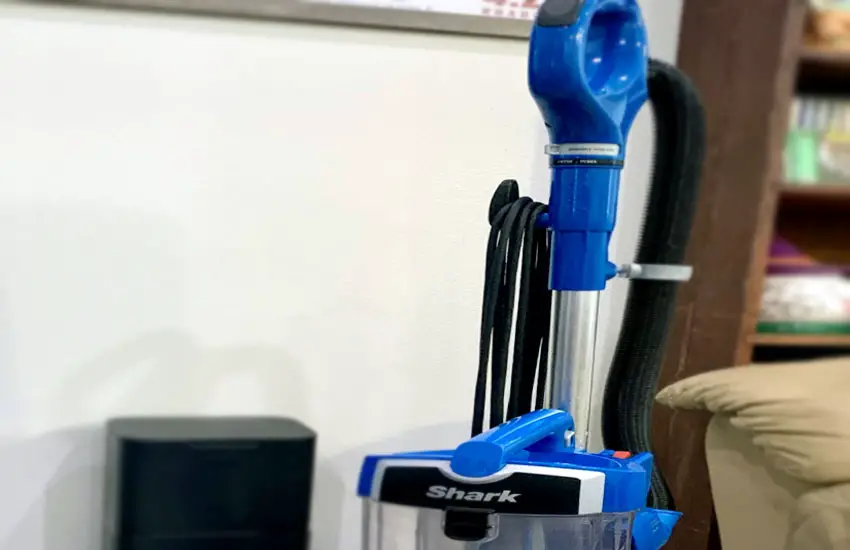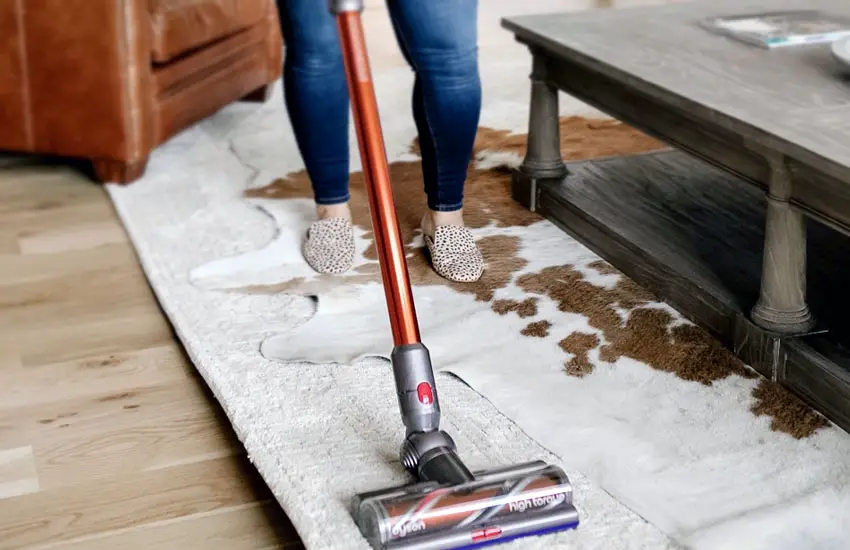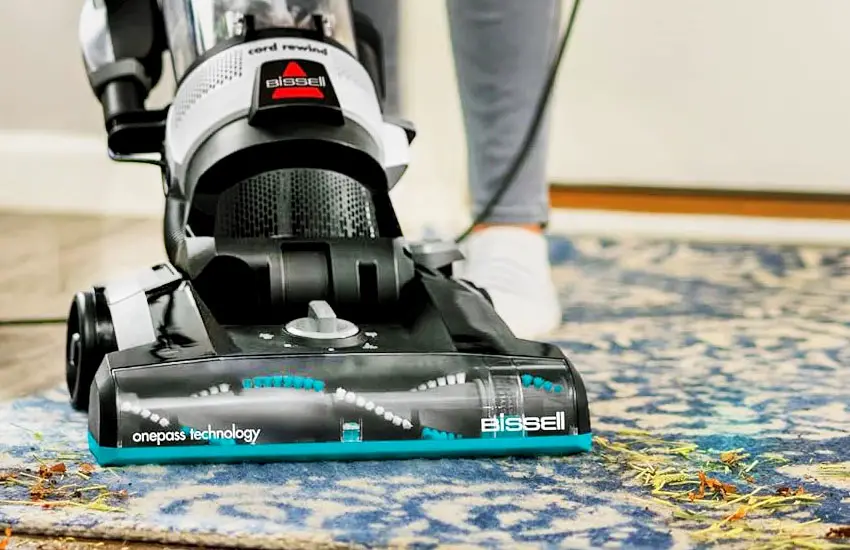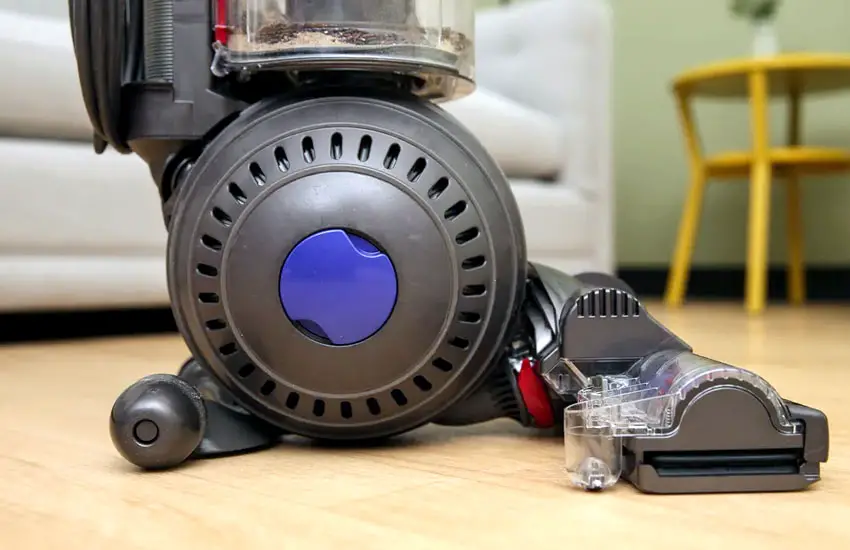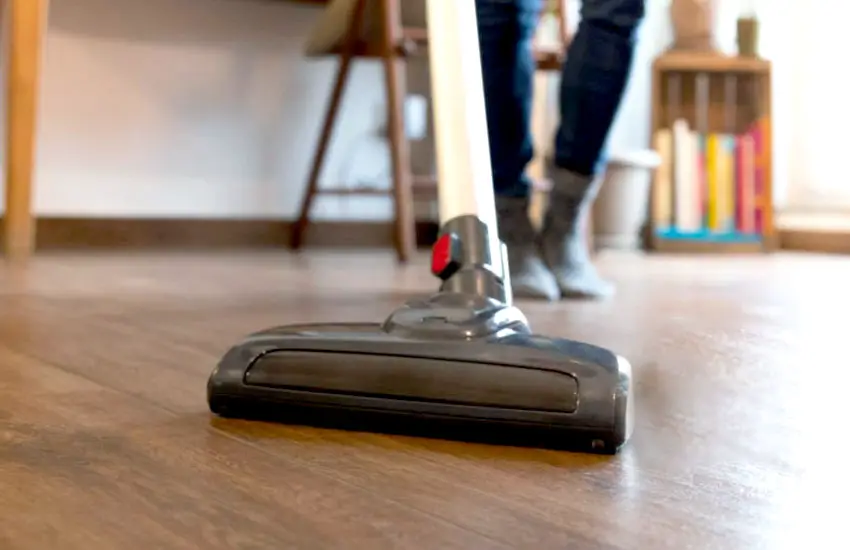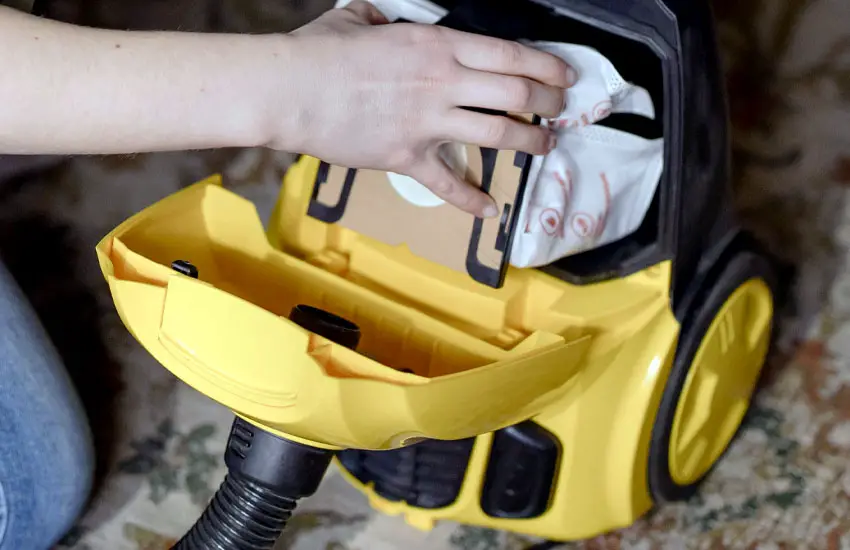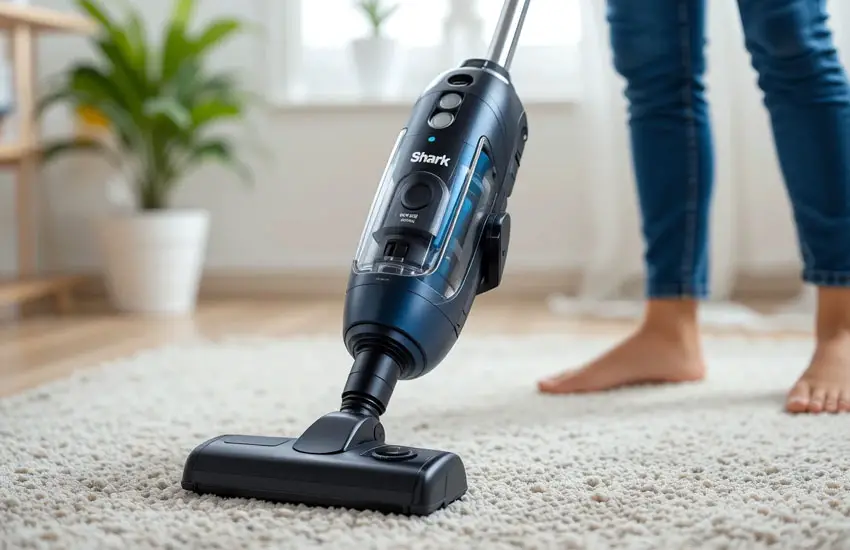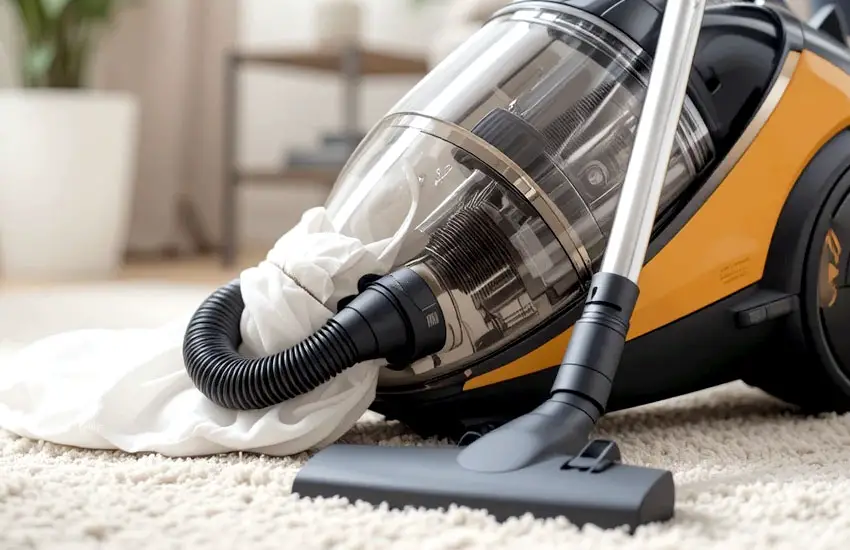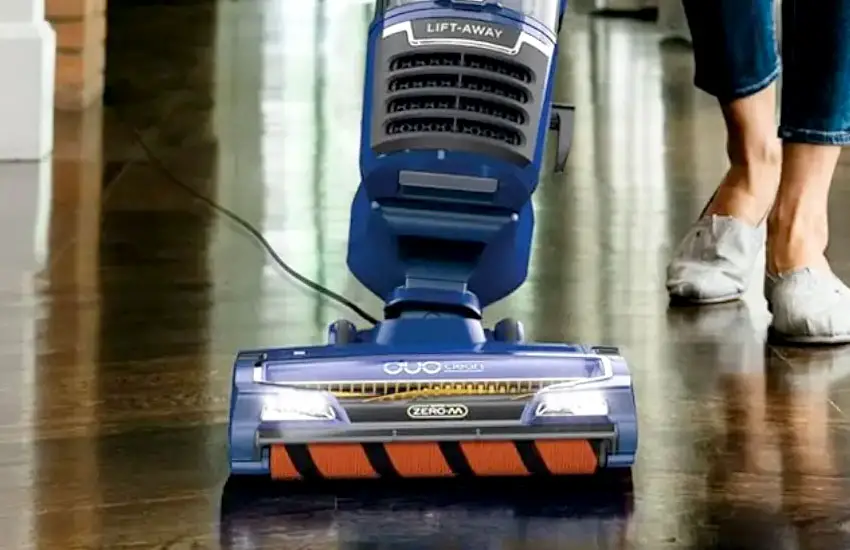As an Amazon Associate, I earn from qualifying purchases at no extra cost to you.
How to Fix a Vacuum Cleaner with No Suction: A Step-by-Step Guide
Is your vacuum cleaner suddenly losing suction? It’s a common issue, but don’t panic! In this article, we’ll walk you through troubleshooting and fixing your vacuum so it can get back to sucking up dirt like it should. Whether it’s a clogged hose, a worn-out belt, or something else entirely, you’ll have your vacuum working again in no time.
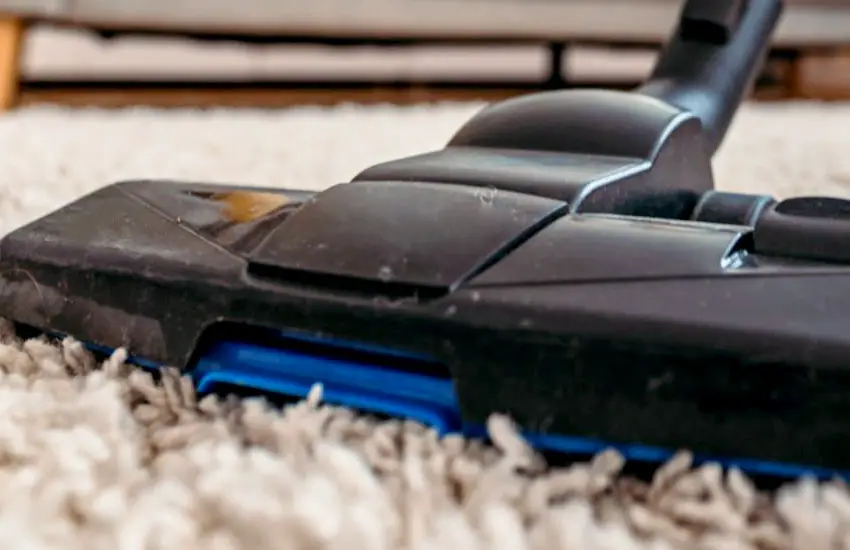
Identify the Problem: Why Your Vacuum Cleaner Has No Suction
When your vacuum cleaner stops sucking up dirt properly, it can be frustrating. A vacuum cleaner’s suction power is essential to picking up dust, debris, and dirt from your floors, carpets, or upholstery. So, when it fails to perform, it’s important to quickly diagnose and address the problem. There are several reasons why your vacuum cleaner may lose suction, and understanding these potential causes is the first step toward fixing the problem.
Clogged or Blocked Airflow
The most common reason for low suction in a vacuum cleaner is a blockage or clog somewhere along the airflow path. The airflow is the key to the vacuum’s suction power, and any obstruction can stop it from working efficiently. Clogs can form in the hose, the brush roll, the filter, or even in the vacuum bag or dustbin. If airflow is restricted, the vacuum won’t be able to pick up debris like it normally would.
Dirty or Full Filters
The filters inside your vacuum cleaner help trap dust, dirt, and allergens to keep your home clean. However, over time, they can get clogged and reduce the amount of air flowing through the vacuum. If you haven’t cleaned or replaced the filter in a while, this might be the reason your vacuum is struggling to suck up dirt. In some vacuums, the filter is washable, so all you need to do is rinse it out with water and let it dry. But if the filter is too dirty or damaged, you may need to replace it entirely.
Problems with the Brush Roll or Beater Bar
Most vacuums come with a rotating brush roll or beater bar that helps agitate the carpet, allowing it to pick up more dirt. If this brush roll becomes jammed or tangled with hair and debris, it can stop spinning properly. When this happens, the vacuum will lose suction, and you’ll notice it’s not picking up as much dirt. In some cases, the brush roll can even get worn out or damaged, reducing its effectiveness and causing suction issues.
Worn or Broken Belt
Another culprit for reduced suction power is a worn or broken belt. The belt connects the motor to the brush roll, allowing it to spin. If the belt breaks or becomes loose, the brush roll won’t spin, which means the vacuum can’t agitate the carpet effectively. This leads to poor suction, especially on carpets or rugs. A broken belt is easy to replace, and fixing it is usually a simple task.
Leaks or Cracks in the Vacuum Body
Vacuum cleaners are built to withstand rough usage, but they are not indestructible. Over time, small cracks or leaks may appear in the vacuum body, particularly around the hose or the connections. These leaks allow air to escape, reducing the vacuum’s suction power. While this is a less common cause of low suction, it’s worth checking if all parts of your vacuum are in good condition.
Once you’ve identified the potential causes of poor suction, it’s time to start fixing the issue. In the next sections, we’ll cover how to address the most common problems in detail, step by step.
Check for Common Blockages and Clogs in the Hose or Filter
Blockages and clogs are probably the biggest offenders when it comes to a vacuum losing suction. The first thing you should do is check the hose, as it’s one of the most common places where debris can get stuck. A blocked hose can completely disrupt the vacuum’s airflow, causing it to lose suction power. So, let’s dive into how you can inspect and fix common clogs.
Inspecting the Hose
To check the hose, start by disconnecting it from both the vacuum body and the wand (if applicable). Once disconnected, visually inspect the hose for any obvious signs of blockage. Often, you can spot clogs by looking at the hose and seeing if there’s anything that might be obstructing the airflow, such as dirt, hair, or debris. If you can’t see a blockage but still suspect something is in the hose, there are a few methods to clear it.
You can use a long, flexible object, like a broom handle, to gently push the clog out. Carefully insert the broom handle into the hose and slowly work it down the length of the hose to loosen the blockage. If this doesn’t work, you can try using a high-pressure air compressor to blow the debris out. Just be sure not to use too much force, as this can damage the hose.
Cleaning the Hose
Once you’ve removed any blockages, it’s time to clean the hose. You can rinse it with water, but make sure it’s completely dry before reconnecting it to the vacuum. Leaving moisture inside the hose could lead to mold or mildew, which is not only unpleasant but could also affect your vacuum’s performance. To ensure the hose is dry, you can hang it up or use a towel to wipe down the interior.
Checking the Filter
After clearing the hose, the next step is to check the vacuum filter. Many vacuums have one or more filters that trap dust and dirt. Over time, these filters can become clogged with debris, restricting airflow and reducing suction. The good news is that cleaning the filter is usually a simple task, and you can often do it yourself without needing any special tools.
To check the filter, locate it (consult the user manual if you’re unsure where it is) and remove it from the vacuum. Depending on the type of filter, you might be able to rinse it under warm water to remove dirt. If your filter is a disposable one, however, you may need to replace it entirely.
Replacing the Filter
If washing the filter doesn’t restore suction, or if the filter is damaged, it’s time to replace it. Filters are usually inexpensive and can be purchased at most home improvement stores or online. Be sure to choose a filter that’s compatible with your vacuum model to ensure optimal performance.
By checking and cleaning both the hose and the filter, you’ll already be taking significant steps toward restoring your vacuum’s suction power. But there are still other potential issues to address, so let’s move on to the next section.
Inspect the Vacuum Cleaner Brush Roll and Belt for Issues
The brush roll (or beater bar) and the belt are essential components for a vacuum to function properly. They work together to agitate dirt from carpets and pull debris into the vacuum. When either of these parts is malfunctioning, your vacuum will lose suction, especially on carpets. Let’s take a closer look at how to check and fix these components.
Examining the Brush Roll
The brush roll is typically located at the bottom of the vacuum and rotates while the vacuum is running. Over time, hair, string, and other debris can get tangled in the brush roll, causing it to stop spinning. If the brush roll is not spinning properly, your vacuum won’t be able to pick up dirt as effectively, leading to poor suction.
To check the brush roll, turn off the vacuum and flip it over so you can access the underside. Look for any hair or debris wrapped around the brush roll and carefully cut it away with scissors. Be gentle when doing this to avoid damaging the brush or bristles. If the brush roll is still not spinning freely, you may need to remove it for further inspection.
Cleaning the Brush Roll
Once the debris is cleared, inspect the brush roll for any signs of damage or wear. If the bristles are bent, worn, or missing, this can affect the vacuum’s suction. In some cases, you might need to replace the brush roll entirely. However, if the brush roll looks fine but isn’t spinning, it could be an issue with the belt.
Checking the Belt
The belt is responsible for driving the brush roll, so if the belt is broken or worn out, the brush roll won’t spin. To check the belt, locate it according to your vacuum’s user manual (usually near the brush roll area). Remove any screws or fasteners to access the belt. If the belt is snapped or loose, you’ll need to replace it with a new one.
Replacing the belt is generally a quick and easy fix. Most vacuums have a replacement belt available for purchase, so be sure to choose the right one for your model. After installing the new belt, test the vacuum to ensure the brush roll spins properly.
By addressing the brush roll and belt, you’ll ensure your vacuum can properly agitate carpets and collect debris. But if you’re still having suction problems, don’t worry! Let’s explore other possible causes in the next section.
Maintenance Tips to Prevent Future Suction Problems
Once you’ve tackled the common causes of low suction, it’s essential to maintain your vacuum cleaner to ensure it continues to perform at its best. Regular maintenance can prevent many issues from arising in the first place. Here are some practical tips to keep your vacuum cleaner in tip-top shape and avoid suction problems in the future.
Regularly Clean the Filters
Cleaning the filters should be a routine part of your vacuum maintenance. Most vacuums have filters that need to be cleaned every few months, depending on usage. If you have pets or allergy concerns, you may need to clean the filters more often. This will help maintain the airflow and suction power of the vacuum.
Empty the Dustbin or Vacuum Bag Regularly
If your vacuum uses a dustbin or bag, it’s important to empty it regularly. A full dustbin or vacuum bag can restrict airflow and cause suction loss. Emptying it when it’s about two-thirds full can help maintain suction power and prevent clogs from developing.
Check the Hose and Brush Roll
Occasionally check the hose and brush roll for any tangles or clogs. If you notice any debris, remove it immediately to avoid blockage. Keeping the brush roll clean will also ensure it spins freely and works efficiently.
Replace Worn Parts Promptly
If you notice any parts, such as the belt, brush roll, or filter, are damaged or worn, replace them promptly. Waiting too long to replace worn-out components can lead to worse problems and even damage your vacuum. Most vacuum cleaners have easily replaceable parts, so it’s usually an affordable fix.
By following these maintenance tips, you can prevent suction problems from reoccurring and extend the lifespan of your vacuum cleaner.
I hope this guide has helped you troubleshoot and fix your vacuum cleaner with no suction! With these simple steps, you should be able to restore your vacuum to its full power and keep it working efficiently. Regular maintenance will also ensure you don’t run into suction problems again in the future.
Frequently Asked Questions
Is it normal for my vacuum cleaner to lose suction over time?
Over time, vacuums can lose suction due to common wear and tear, such as clogged filters or blocked hoses. Regular cleaning and maintenance can help prevent this.
Can I fix a vacuum cleaner without suction myself?
Yes, many vacuum issues, like clogged hoses or a dirty filter, can be fixed easily with basic tools and a little time. For more complex issues, consider consulting a professional.
Do I need to replace the entire vacuum if it loses suction?
Not necessarily. In most cases, you can fix the problem by cleaning filters, clearing blockages, or replacing parts like the belt or brush roll.
Is it safe to use my vacuum with low suction?
Using your vacuum with low suction for a short time is generally safe. However, continued use with poor suction can lead to further damage, so it’s best to address the issue as soon as possible.
Can a broken belt cause my vacuum to lose suction?
Yes! A broken or loose belt will prevent the brush roll from spinning, which can result in poor suction, especially on carpeted floors.
Is it okay to use water to clean my vacuum’s hose?
Yes, you can use water to clean the hose, but ensure it’s completely dry before reconnecting it to the vacuum to avoid mold and mildew.
Can a clogged vacuum hose affect suction?
Absolutely! A clogged hose can block airflow, significantly reducing suction power. Always check for blockages when your vacuum isn’t performing well.
Do I need to replace the filter every time I clean it?
Not always. If your filter is washable, cleaning it may be enough. However, if it’s damaged or heavily clogged, replacement may be necessary to maintain suction.


